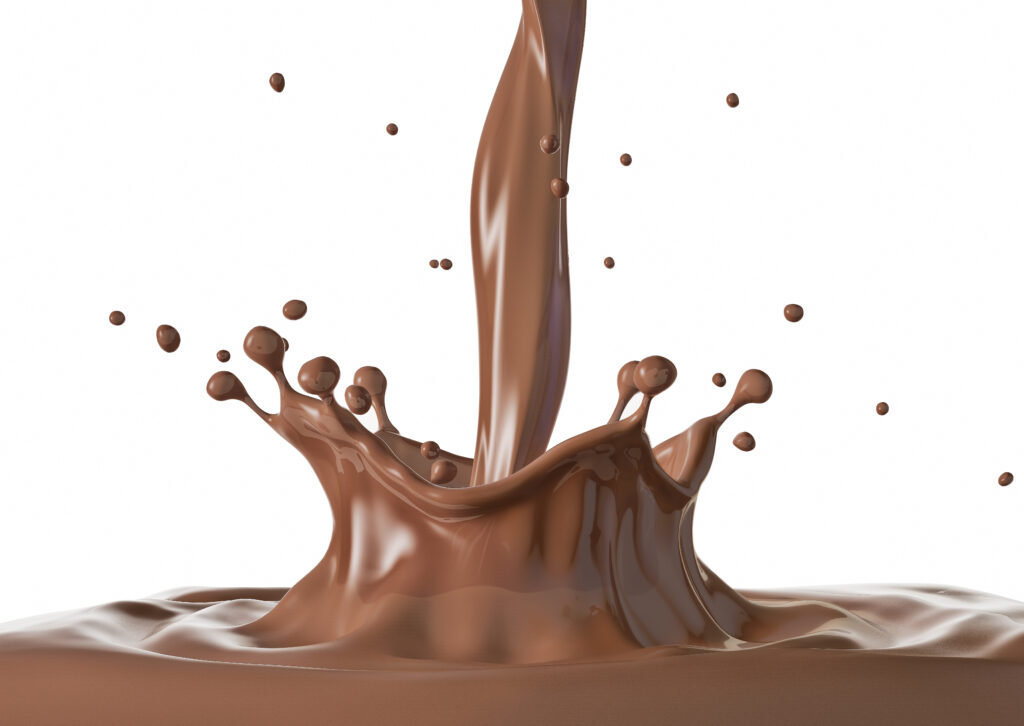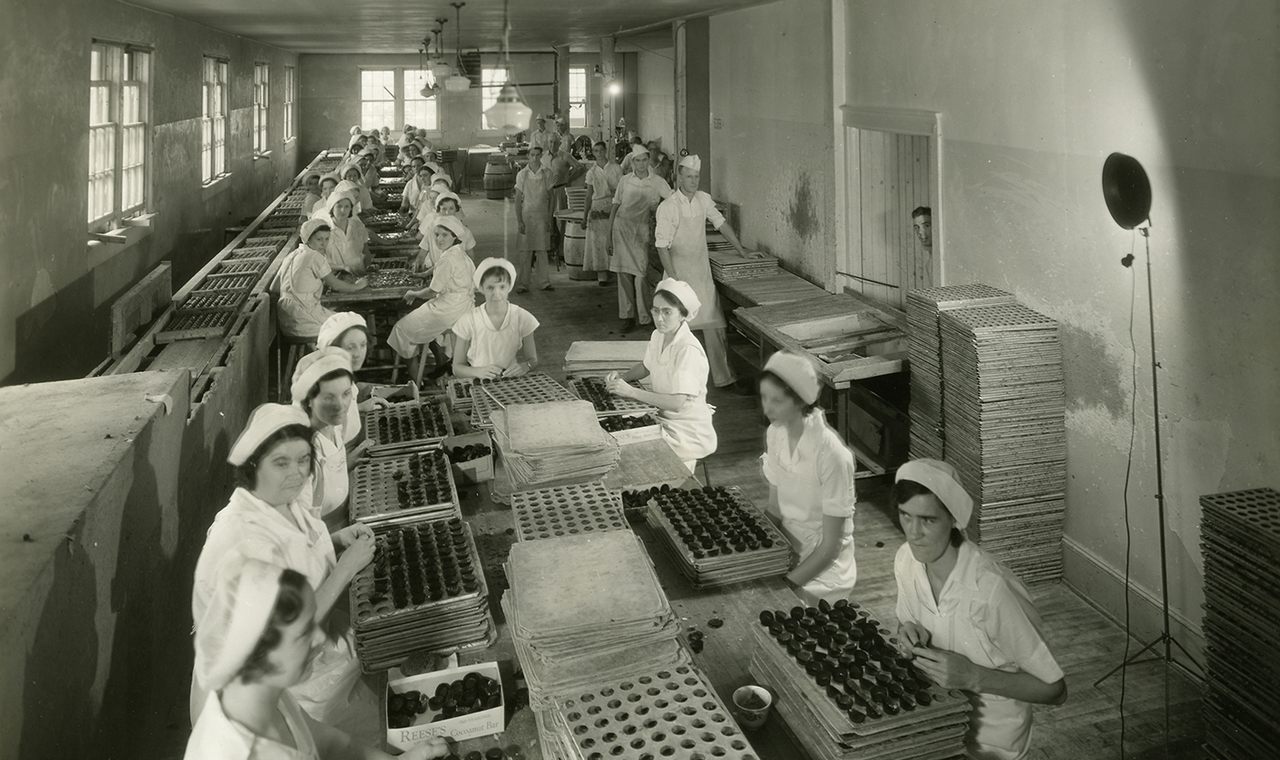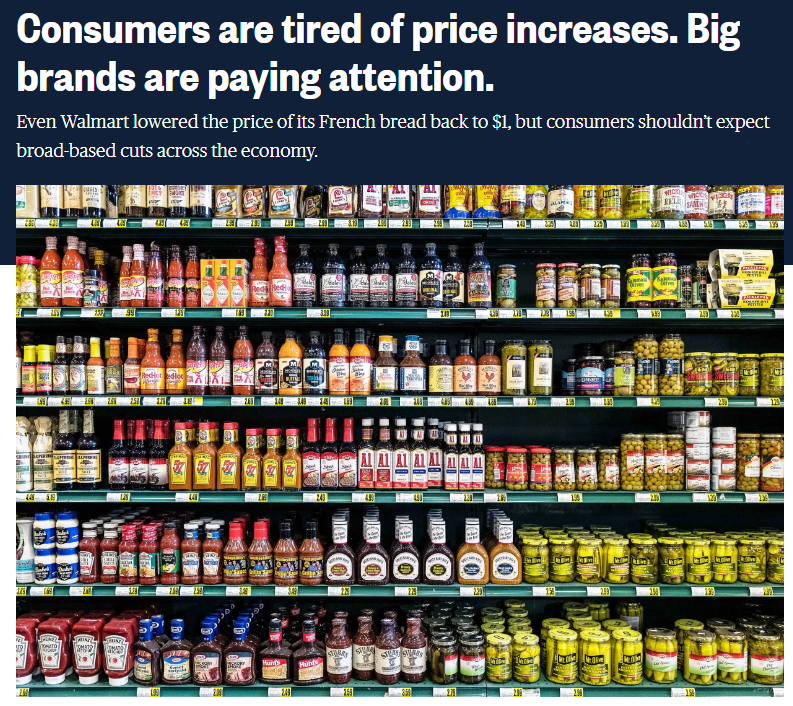
An Iconic American Brand at a “No Risk” Price
AI Might Change the World, But It Won’t Change Chocolate
| Welcome to Porter & Co.! If you’re new here, thank you for joining us… and we look forward to getting to know you better. You can email Lance, our Director of Customer Care, at this address, with any questions you might have about your subscription… The Big Secret on Wall Street… how to navigate our website… or anything else. You can also email our “Mailbag” address at any time: [email protected]. Paid subscribers can also access this issue as a PDF on the “Issues & Updates” page here. |
Harry Burnett’s 1928 chocolate experiment spawned a $2 billion candy brand that’s now one of the biggest sellers in America.
But it wasn’t a straight path to fortune and fame for him.
H.B., as people called him, had for years struggled to hold down a job. In 1919, the 40-year-old dairy-farm manager was laid off from his job in rural Pennsylvania, and decided to go out on his own.
In 1920, following his candy-maker mother’s footsteps and with the backing of investors, he launched the R&R Candy Company in Hummelstown, Pennsylvania.
R&R sold chocolate-covered almonds and raisins, the kind H.B.’s mother had made and sold when he was a kid. But H.B.’s upstart company was competing head-to-head against America’s largest chocolate maker, located just one town over.
H.B.’s company folded after just 18 months. With 10 children and a blind wife to support, he swallowed his pride and went to work for the chocolate company that had just put the R&R Candy Company out of business.
H.B. began in the shipping department of the former competitor, and his boss Milton quickly promoted him to foreman. But even his foreman’s salary didn’t stretch far enough to feed his family, which eventually grew to 16 children.
So in 1923, H.B. left his job to launch his second candy company. With limited funds, he set up shop in his basement and began experimenting with new formulations of chocolate. Drawing upon lessons he learned from his first failure, the business sold enough candy to keep the doors open, but not much beyond that.
Everything changed in 1928 on a sales trip in Harrisburg, Pennsylvania. One of H.B.’s retail customers was selling so many peanut-butter cups that he couldn’t keep his shelves stocked. H.B. decided to come up with a similar product. He purchased a 50-pound container of peanut butter and began playing with new creations in his basement chocolate factory.
And he found a winner… He came up with a ball of peanut butter covered in chocolate. The combination was perfect, but he soon found that store-bought peanut butter didn’t work in mass production. So he developed his own line of super-roasted peanut butter that bordered on burnt. The extra roasted peanut butter mixed perfectly with milk chocolate, delivering the flavor combination in what is now known as the Reese’s Peanut Butter Cup.

In 1933, the H.B. Reese Candy Company launched its first ad campaign featuring H.B.’s wife and 16 children, with the slogan “16 Reasons to Eat a Reese’s.” Business boomed, and he expanded his product line to include chocolate-covered honeydew melon and coconut-caramel chocolate bars.
Then another challenge led to a huge business breakthrough. Because of sugar rationing during World War II, the Reese Candy Company stopped making everything else, and doubled down on the candy that required the least sugar: Reese’s Peanut Butter Cup.
Focusing exclusively on the hit peanut butter cup took the company to the next level. By the 1950s, Reese’s had become a nationally recognized brand, with large-scale production and distribution at retail giants like Sears Roebuck.
When H.B. Reese passed away in 1957, his six sons took over the business. Ultimately, in 1963, the brothers decided to sell to the descendants of Reese’s former boss Milton, whose candy empire had solidified itself as America’s largest chocolate maker.
Backed by the industry’s dominant distribution and marketing machine, Reese’s Peanut Butter Cup thrived. Within just six years of the transaction, it became the company’s best-selling product with over 300 million units sold each year.
The Reese’s brand also thrived under the innovations of its new owner. The company introduced a variety of Reese’s branded products, including baking chips in 1977, followed by Reese’s Pieces in 1978. By the end of the 20th century, Reese’s products filled supermarket shelves in the form of branded cereals, ice cream, cake frosting, and peanut butter.
Today, the basic Reese’s Peanut Butter Cup formulation, handcrafted in a basement nearly a century ago, continues to be the company’s largest and fastest growing product line, bringing in over $2 billion annually.
And the business that acquired Reese’s has gone on to become a great American success story. The enduring demand for the company’s products has thrived through two world wars, the Great Depression, and every other episode of macroeconomic and social upheaval. Its premium business model typically commands a premium share price.
But on rare occasions, a macroeconomic shock pushes its share price down into the bargain bin.
One of those occasions came on the eve of the Great Financial Crisis. In December 2007, I recommended the company as “Our Best ‘No Risk’ Opportunity Ever” – even while warning about the coming economic fallout from the subprime-mortgage meltdown.
The company’s shares escaped the Great Financial Crisis with a modest 21% peak-to-trough decline, versus a 53% drop in the S&P 500. And in the 16 years since that original recommendation, the shares have delivered a 610% total return, compared with a 356% gain in the S&P 500 over the same time period.
Today, the stock is once again approaching a valuation that I believe is low enough to deliver a repeat no-risk performance. The company is facing the same consumer weakness that’s recently pressured other world-class consumer brands across the board.
Consumers Hit the Wall
The long-expected consumer slowdown and recession may finally be near.
The latest retail sales data and earnings results from a number of consumer-goods companies reflect a worrying trend: Tapped-out shoppers are pushing back against higher prices.

Included in this trend is global beverage-and-snacking giant PepsiCo, which reported a 0.5% decline in year-on-year sales in Q4 – its largest revenue decline since the COVID-19 pandemic in Q2 2020. This comes after a series of double-digit price increases that helped boost revenue 45% from Q1 2022 through Q3 2023.
Pepsi’s North American segment was among the weakest performers, with a 3.5% sales decline. Management noted on the February 9 earnings call that the drop could be partly described by “a slowdown due to pricing and the disposable-income situation,” corporate-speak for a decline in consumer spending. Pepsi also cut its 2024 sales guidance.
Fast-food giant McDonald’s reported a sharp deceleration in Q4 sales growth, with management noting that customers had become “weary of pricing,” as diners began placing smaller orders.
This showed up in the key same store sales (“SSS”) metric, which measures the revenue growth generated from a company’s existing store base and excludes growth from new store openings. McDonald’s SSS fell to 3.4% in Q4, down from a prior range of 8% to 12% growth in 2022 and earlier in 2023. The company had previously instituted double-digit price increases to power a streak of rapid SSS growth.
The alarming takeaway is how swiftly this consumer weakness has finally appeared. As recently as McDonald’s Q3 earnings call in October 2023, management noted that its aggressive price increases hadn’t created any meaningful drag on demand. That story changed as SSS dropped by more than six percentage points from 8.8% in Q3 to 3.4% in Q4.
Coffee retailer Starbucks also reported weaker-than-expected sales and earnings growth in Q4, citing slower customer traffic. SSS for the coffee giant fell to 5%, down by half from the 10% SSS growth reported in Q3. The company also noted its January sales were weaker than expected. This caused the company to cut its forecast for 2024 revenue and SSS growth, noting its results will “take some time to normalize.”
Finally, even one of the most resilient and recession-proof consumer-staple companies, McCormick – the world’s largest seller of food spices and hot sauces – reported a 3% decline in product volumes. Even though McCormick raised prices 5%, the drop in volume caused sales growth to decelerate to just 2%.
The company also cut its 2024 forecast, citing “greater-than-expected pressure on the consumer.” Analysts now forecast McCormick’s revenue will decline in 2024. This expected revenue drop is notable given that the spice maker has reliably grown its revenue every year since 2002, including during the 2007-2009 downturn.
With across-the-board weakness in everything from coffee and fast food to cooking spices, America’s key economic engine – consumer spending – appears to be hitting the wall.
Let’s see what’s behind the sudden stagnant spending.
COVID Savings Running Dry and Credit Cards Maxed Out
With sticky inflation eroding real wages, the two main sources of extra cash that American consumers have been spending are both running low.
The main source is the COVID-era stimulus savings. A recent study by the Federal Reserve Bank of San Francisco indicates that the extra cash households built up from pandemic-era stimulus has dropped from a peak of $2.1 trillion in August 2021 to $430 billion by Q4 2023. The study indicates that this excess savings will likely be fully depleted in the first half of 2024.
The other is a record amount of credit-card debt. For the last two years, consumers have tapped into their plastic to offset eroding savings and purchasing power from the ravages of inflation. But now, it appears consumers have reached their borrowing limits.
December data from the Federal Reserve showed an alarming drop off in credit-card borrowing, which increased by a tiny $1.56 billion – a 90% miss against Wall Street expectations of $15.9 billion. This followed November’s $24.75 billion surge, which was the second-highest November increase ever. Reduced credit-card debt, though good on one level, means less money for consumers to pump into the economy.
It appears consumers enjoyed one final splurge ahead of the Christmas holidays, and are now putting away the credit cards and scaling back consumption.
The most recent retail sales figures for January confirm this retreat. Data from the U.S. Commerce Department revealed a 0.8% decline in January retail sales, more than double the 0.3% expected drop.
These early warning signs are eerily reminiscent of the environment of late 2007. Leading up to that point, rampant use of home equity lines of credit (HELOCs), a second mortgage that lets homeowners access cash against a home’s value, juiced consumer spending, as real wages stagnated.
But by 2007, higher interest rates increased the cost of borrowing, causing mortgage lending and home equity values to plunge. Thus, consumers lost their ability to tap into HELOCs. As a result, they turned to plastic. Credit-card debt peaked at a then-record $350 billion in December 2007, compared with $315 billion in December 2006, before starting to turn lower in January 2008 as the Great Financial Crisis kicked into gear.
Now, as then, a slow-motion debt crisis is working its way through the economy. The details, of course, are different – just replace trillions in delinquent mortgage bonds in 2007-2009 with trillions in underwater Treasuries and commercial-real-estate loans today. The symptoms and ultimate result will likely be the same: gradual economic distress morphing into a full-blown financial panic and a sharp recession.
Now, for the good news. Today’s sluggish consumer spending trends have produced a temporary hiccup in the operating results of the same American chocolate giant I first recommended in December 2007. And just like back then, when the coming economic distress inevitably passes, the long-term prospects of this world-class consumer brand will remain intact.
For investors who can look beyond this short-term weakness, the stage is set for a once-in-a-decade opportunity to buy shares in one of the world’s greatest consumer brands at a rare discount.
A Simple Business With Staying Power
This content is only available for paid members.
If you are interested in joining Porter & Co. either click the button below now or call our Customer Care Concierge, Lance James, at 888-610-8895.